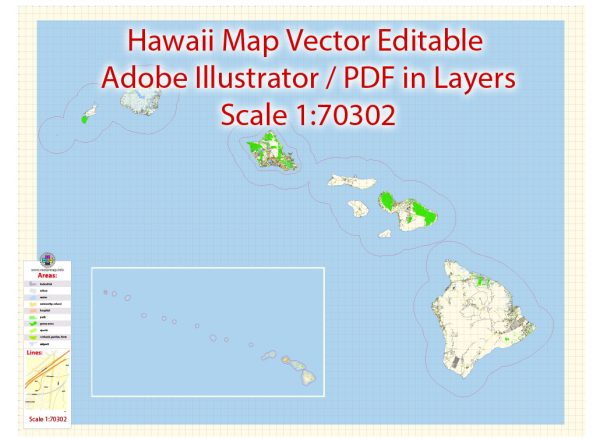Hawaii’s history of urban development is shaped by a unique blend of indigenous Hawaiian traditions, Western influence, and the state’s geographical challenges. Here is a brief overview:
- Indigenous Hawaiian Settlements: Before Western contact, Hawaii’s urban development was characterized by small, scattered communities known as ahupua’a. These were land divisions that stretched from the mountains to the sea, allowing Hawaiians to utilize the diverse ecosystems for sustenance. The urban centers, such as those found in Waikiki on Oahu, were marked by heiau (temples), fishponds, and taro fields.
- Western Contact and Influence: With the arrival of Western explorers and missionaries in the late 18th and early 19th centuries, Hawaii underwent significant changes. The capital city of Honolulu, located on the island of Oahu, became a focal point for trade and cultural exchange. Western-style buildings and infrastructure, such as Fort Street (now Fort Street Mall), emerged in Honolulu.
- Hawaiian Monarchy Period: During the reign of the Hawaiian monarchy, particularly under King Kamehameha III, urban development continued. The monarchy established government institutions, and Western-style architecture became more prevalent. Iolani Palace, completed in 1882, is an iconic example of this period and is the only royal palace in the United States.
- Annexation and Territorial Period: In 1898, Hawaii was annexed by the United States, leading to further changes in urban development. The construction of military bases, such as Pearl Harbor Naval Shipyard, contributed to the growth of urban areas, and more Western-style buildings were erected.
- World War II and Postwar Development: The attack on Pearl Harbor in 1941 had a profound impact on Hawaii. The islands played a crucial role in the Pacific Theater of World War II, leading to increased military presence and infrastructure development. After the war, Hawaii experienced an economic boom, contributing to urbanization and the construction of housing developments.
- Statehood and Modern Urbanization: Hawaii became the 50th state of the United States in 1959. Statehood brought increased federal investment, tourism, and a surge in population. Urban areas expanded, and modern infrastructure, including highways and airports, played a significant role in connecting the islands.
- Contemporary Challenges: Today, urban development in Hawaii faces challenges such as limited land availability, environmental concerns, and the need for sustainable development. There is ongoing debate about balancing economic growth with preserving Hawaii’s unique natural and cultural resources.
Throughout its history, Hawaii’s urban development has been influenced by a complex interplay of indigenous traditions, Western impact, and geopolitical forces, resulting in a distinctive blend of cultures and architectural styles.


 Author: Kirill Shrayber, Ph.D.
Author: Kirill Shrayber, Ph.D.